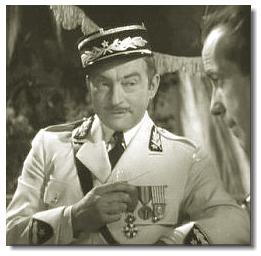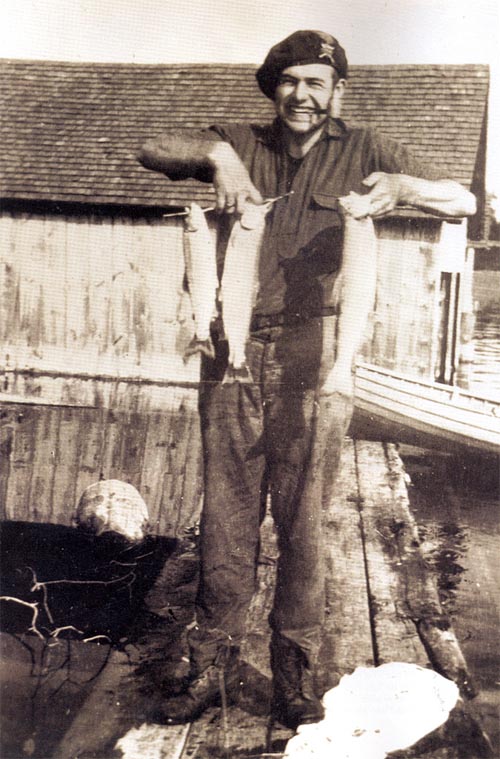
As I mentioned last time, I’m planning to spend the next few weeks going through my to-blog-about stack, concentrating on all of those great questions from readers that I answered briefly in the comments, but never managed to get around to devoting a entire post or two to expanding upon, as I intended. I’m well aware of the old saying the road to hell is paved with good intentions, but until today, I was not aware that the highway markers were provided by procrastination.
Case in point: intelligent and insightful reader Jen posted today’s question onmy post commemorating John Updike’s passing, an event that my archives tell me happened way back in January, and have I devoted a post yet to answering it? Well, have I?
I’m asking semi-seriously, because as of this morning, I honestly didn’t remember. I often so go to town in answering questions in the comments that I have the illusion that I have indeed blogged on a subject. But since the comments aren’t searchable via the wee-but-powerful engine at the upper right-hand corner of this page (I know; I think it’s weird, too), my waxing poetic over a question doesn’t really help anyone but the people who happen to check — and re-check — the comments on that particular post.
It’s kind of like forgetting to post any of my photos of Barcelona until seven months after I took them. The market’s pretty, isn’t it?
Okay, that’s one goal checked off my list. Here’s another. Quoth Jen way back when:
Anne, —in 2002, Dr. James Plath, an English professor, friend of the late writer, and specialist in John Updike’s work said, “While other people were writing about characters in the extreme, John Updike spoke and wrote about people who lived middling lives in the middle of the United States which is the anchor of this country.”
Especially with the higher standard unpublished writers must reach, middling Midwesterners, on the surface, have an extra challenge in getting past criteria #1 on panelists’ dream-date list. Yet, like the character development shown in your excerpt, isn’t it how we expose our characters that pushes them past the bell curve (or not)?
I should admit my Midwestern protagonist is feeling a bit ordinary today.
Jen, this is a question I hear in my craft classes all the time: how does one write about ordinary characters and ordinary life without the result being, well, ordinary?
I’m not sure that I would agree with your professor’s assessment — Updike was hardly the ONLY portrayer of Middle America in the post-war era. (Andre Debus, anyone? Rachel Ingalls? About a thousand other writers?) But it’s absolutely true that the portrayal of a so-called ordinary character can elevate that character above a dull normal.
In order to pull that off, however, that character — or lifestyle, or workplace, or situation — cannot be merely sketched out, however. The writer has to imagine a fully-rounded protagonist who is more complicated than what a casual observer would consider typical of his job, class, sex, race, political affiliations, sexual preferences, and so forth, because unless the writer conceives him as an individual, he’s likely to come across as a mere representative of a group, trend, or background.
Taken far enough, of course, the result is a stereotype. But haven’t we all seen enough mean-spirited cheerleaders (who invariably rule the school in fiction), sulky teenagers (rolling their eyes and sighing perpetually in submissions), absent-minded professors (or, even more common on the page, professors who constantly speak as though they were giving a lecture), intolerant small-town denizens (with or without pitchforks in their hands), and soulless corporate lawyers (okay, I’ll give you that one) to last a lifetime?
Or several lifetimes, if we happen to read a lot of submissions?
Updike was very, very good at elevating ordinary characters into something beyond representatives, at least for male characters. His men are not just stand-ins for their position in society or backgrounds, but fully-realized individuals operating within the rubric of what Wallace Stevens called the time and space in which we breathe.
So that’s the short answer, Jen: fashion characters that do not feel like characters, but people, occupying a world that is very much like ours, only more interesting. Not only to the author, or to people who live within the environment being depicted, but to readers who know nothing about them.
Well, that’s another craft problem neatly polished off. Moving on…
Oh, how I wish it were that simple — or that fewer good writers mistook the classic writing advice write what you know for a directive to reproduce even the not-very-interesting life around them. Bordering-on-boring slice-of-life submissions are so common that I’ve seen more than a couple agents and editors march into writers’ conferences and declare that slice-of-life fiction is just bad writing.
I think that’s a pretty radical overstatement — there’s plenty of excellent slice-of-life writing out there — but I can certainly understand how someone who read manuscripts for a living might be annoyed into that extreme a conclusion. Many, many aspiring writers take write what you know far too literally; originally, the advice was meant to discourage writers from speculating in print about social conditions and situations they knew little or nothing about.
Why? Well, in part, because doing that tends to result in stereotype-generation. Not to mention fiction that may not ring true. So a more sensible version of write what you know might be do your homework, then write what you find out.
Another unfortunate interpretation of write what you know is the quite untrue supposition that just because something happens in real life, it will necessarily be interesting on the page. Editors have been driven into madhouses by this one since the Brontë sisters first got the idea of placing pen to paper. Including too many details — or uninteresting ones — makes it hard for the reader to figure out what is and isn’t important in a scene.
Those of us who read manuscripts for a living have a number of terms for manuscripts that include mentions of every paper clip on a desk, as if each were as important to the scene as the dead body lying on top of them, but you probably don’t really want to know. They are not very polite. About the nicest is lazy writing.
That made some of you realism-lovers out there sit up in your chairs, didn’t it? “But Anne,” fans of the mundane sputter indignantly, “how can doing too much work possibly be construed as lazy? I can understand how it might be irritating to an agent or editor to have to edit out extraneous details, but isn’t it far better to over-describe than to leave the reader guessing what the physical environment is like?”
I understand your ire, oh sputterers, but the question misses the point, from a professional reader’s point of view: ideally, you shouldn’t be picking between two extremes, but finding an ideal balance between too much information and too little. And since it’s the writer’s job, not the editor’s, to discover where that happy medium lies for any particular story, I don’t think you can really blame the pros for regarding writers who shirk this duty as lazy.
Think about it: if all that were necessary in order to convey the feel of a room or truth of a situation was to describe it down to the last dust mote and/or stray frown on a bystander, film would trump good writing, every time. The old cliché that a picture’s worth a thousand words is often true, in the sense that if there’s a lot going on in a photo, it would take a great many words to describe it.
But there’s also a pretty good reason that novels don’t typically contain photographs: part of the point of the art form is to describe things, people, and situations not by depicting them in exhaustive detail, but rather by the author’s selecting what is most important to the truth of the scene and concentrating on it.
To put it a bit more bluntly: a large part of a writer’s value to the reader lies in her ability to winnow out the unimportant. Just because something is real — or realistic — doesn’t mean it’s going to capture a reader’s interest. And every writer on earth should be pretty happy about that, because if every aspect of quotidian life were hugely entertaining, novelists and memoirists would be rendered obsolete, replaced by film cameras and court reporters.
But what we fiction and creative nonfiction writers do to reality is far, far more complex than simply holding, as ’twere, the mirror up to nature, right?
That’s something that writers of the ordinary are prone to forget, alas: the novelist’s job is not merely to tell a good story and to provide trenchant insight into the world he’s depicting, but to entertain. No matter how true-to-life your protagonist may be or how realistic the situation, if the way you write about it isn’t entertaining on some level, people will have a hard time reading it.
I see some of you turning up your nose at that, murmuring about how pandering to the lowest common denominator is death to literature. That may be comforting to believe, but actually, the imperative to entertain applies equally well to the least accessible literary fiction as to the most mainstream. The audience expected to enjoy the book in question is merely different.
Instead of regarding the need to interest and entertain the reader — and Millicent, as the gatekeeper of the agency that is, we hope, going to bring your book to the publishing house who will get your book into the hands of that reader — as a burden, why not think of it as a useful reminder that one of the biggest distinction between a professional writer and a hobbyist is not whether she gets paid, but whether she is willing to write with a target reader’s literary desires in mind, as well as her own? Wouldn’t you rather that your ideal reader found your work scintillating, rather than a chore to read?
Chew on that for a while, lovers of abundant and unimportant detail: wading through a sea of irrelevancies is no fun. And frankly, your reader would prefer for you to make the decision about what is and isn’t important for him to know. How you draw the line is part of your authorial voice.
Far more frequently, though, slice-of-life fiction suffers from the opposite problem: many writers assume — again, wrongly — that if they’re writing about everyday life, they don’t need to fill in the details of the environment, social relations, characterization for minor players, etc. Everybody knows what an office is like, right, and a gas station? Everyone has known an incompetent middle manager, an annoying co-worker, a bored check-out girl?
This, too, tends to get labeled as lazy writing, for obvious reasons: it’s the writer’s job to create a full and interesting world for her readers to inhabit, not the reader’s job to fill in the details from his own experience or imagination. And as any Millicent would be only too glad to tell you, it’s not the agent or editor’s, either.
Before any literal-minded reader demanding to know whether I’m saying that it’s always imperative to provide a physical description of every character as soon as she appears on the page, I hasten to reiterate: how much detail serves the story best is ultimately the writer’s decision, and an important one. Although each book category does have its own storytelling conventions, the choices involved are creative, not absolute.
So matter how much any given aspiring writer out there would like for there to be a hard-and-fast rule governing, say, the timing (or inclusion) of physical descriptions, or a foolproof formula for a dialogue-to-narration balance, there aren’t. What will work best for any given story is different.
Hey, this is an art we’re talking about here, not a science. Constructing an enjoyable narrative is hard work.
I see a few hands raised out there. “Okay, Anne, I get that as the writer of a story, I’m ultimately responsible for how I tell it. But I genuinely want to give my readers an accurate feeling for real life as I perceive it — and that means having to take them to some pretty ordinary places. Offices. Traffic jams. Supermarket aisles. How can I make that kind of place interesting to the reader while still remaining true to life?”
Oh, that’s a snap to answer: by how you write about it.
I know, I know — that sounds like I’m being flippant, but actually, I’m not. Often, the author’s perception of the protagonist’s ordinariness is more problematic than the locale: in the vast majority of submissions that deal with so-called ordinary people, their lives and characters are depicted as dull, as composite or representative of an entire group of people rather than as we encounter people in real life, as individuals with personal quirks. Interesting personal quirks, ones that the reader might not expect.
Not having any surprising depths would be problematic for any protagonist, anywhere, anytime — and frankly, with most readers, not just the professional ones.
Why? Well, Millicent and her ilk simply see more dull normal characters than the average reader, for the simple reason that they read many more books, at least in part. From their point of view, reading about an ordinary character from a generic background — even a background that a great many potential readers share — is rather like listening to an actor doing a generalized foreign accent, rather than one tailored specifically to the background of the character she’s portraying.
If you doubt this, try listening to some of the faux Irish brogues that turn up on US stages — they tend to be better on Canadian ones — that wander from County Cork to Dublin and back again with a winsome disregard for geographic probability, or ersatz American accents on British stages, evident hangovers from WWII GIs, with adjectives evidently from Brooklyn, nouns from Houston, and verbs from the movie lots of LA.
Genuine accents are always individuated, to a certain extent — and thus potentially a source of surprise and interest on the page. A close listener to my speech might discover, for instance, that my vocabulary changes when I’m talking about politics (the result of years of graduate school), my hometown boasts a specific cadence unshared by people who live 15 miles away that pops up when I talk about my childhood, and when I’m embarrassed, some of my English grandmother’s vowels come tripping out of my mouth. (“Oh, I’m so very sorry!”) And don’t even get me stared on the kid I knew in college who was from New Jersey, but tried to speak like a Cambridge graduate in tribute to his deep and abiding love of Monty Python.
My point is, real accents are a seething mass of influences and choices, so when we hear an actor produce a voice seemingly representative, it can sound rather fake. So, too, with characterization. No one is absolutely the product of a monolithic background, any more than anyone remains in character 100% of the time.
It’s the deviations and moments of departure that render us interesting. So if your ordinary protagonist is in danger of becoming too predictable, why not have him act out of character every now and then, as people do all the time in real life? Why not have one of the minor characters flip out about something out of a clear blue sky? Or have his love interest be in a lousy mood not because of anything that’s going on in the plot, but because she’s just gotten a parking ticket?
Starting to get the picture?
Ordinary does not have to mean uneventful or unquirky. It’s far from impossible to portray an ordinary person in an ordinary situation in a manner that will be interesting to a reader.
It does, however, require thinking about the character and scene differently than most writers were taught in their composition classes. Most beginning writing classes fall into the write-what-you-know school, tending to encourage neophyte writers to concentrate upon building their craft through acutely observed everyday life — a good place to start, certainly, but not one that necessarily takes the reader’s point of view into account as much as Millicent might like to see.
We all know why by now, right? From the industry’s point of view, it’s the writer’s job to render the protagonist and the situation fascinating, not the reader’s job to say, “Oh, this is supposed to be an everyday character; I guess I don’t mind his being predictable.”
Predictability is the enemy of interesting fiction — which renders writing about the mundane especially challenging. Yet virtually any plot or character is capable of generating something that the reader will not have expected, and the essence of freshness as the industry defines it is placing a new narrative twist on the world we all share.
The ability to surprise isn’t exclusive to any particular time zone, after all.
But that doesn’t mean that an agent, editor, or contest judge fond of good writing would seriously expect a writer portraying an average Joe or Janet to have them do something they would never do, either. The challenge in portraying any culture foreign to Millicent — and I think a good case could be made that quotidian life in the rest of the country is often rather foreign to NYC-based agents — is to present it to her in a manner that will both educate and intrigue her.
Oh, and entertain her as well.
Ditto with a so-called ordinary protagonist: instead of concentrating upon what makes her typical, why not figure out what makes her different from what a reader might expect? Or, to put it with the bluntness which is actually a bit out of character for me, what makes this character interesting enough for a reader to want to follow her for an entire book?
That, too, was a serious suggestion, not a flippant one: why write this character’s story, and not another ordinary person’s?
If you don’t know, chances are that the reader will not, either. Unpleasant to contemplate, but true. If a protagonist’s creator feels that a protagonist is a bit nondescript, readers will usually draw the same conclusion.
Unlike readers, however, the writer has the opportunity to do something about it. Again, instead of thinking of that as a drawback, try regarding it as an interesting challenge: if you’re feeling that your protagonist is ordinary, perhaps your fine writer’s sense is telling you that it may be time to make him more complex.
That’s easier than it may seem on first blush, you know. Most people are actually pretty interesting if you take the time to get to know them: not their daily habits, which may have been formed externally, but who they are inside, what memories they hold, how they reacted on the day that a giant redwood fell onto the local schoolhouse, etc. Try giving your protagonist a secret shame, a bizarre hobby, a long-ago childhood determination to become an astronaut — even if those elements never actually make it onto the stage, as it were, your knowing that they are in her background will probably make a difference in how ordinary you feel she is.
Not all black sheep carry their wool on the outside, if you catch my drift. Play with the past a little, or tinker with long-held desires to create an intriguing view of the future.
Not everything that’s going on in a story should be right on the surface, after all.
There you go, sitting up straight in your chairs again, but think about it. Giving your protagonist a more intricate past than a dismissive, “Oh, he’s an ordinary Midwesterner,” can inform his actions, even if you choose never to let the reader in on that past.
Besides, I can’t be the only writer out there who has met fascinating Midwesterners, can I? I’ve known many who were positively bristling with quirks. Not to mention secret plans for personal pleasure-seeking, business re-envisioning, and world domination that would make some of us more timid souls on the coasts gasp.
A good way to jump-start brainstorming about ways in which your protagonist as interesting is to invest some time in drafting a brief bio for him. Try going back a generation or two. I’m often surprised at how infrequently US writers discount the family backgrounds of characters whose kin have been in this country for more than a generation or two; go back far enough, and you’re bound to find a dandy Ellis Island or that’s-when-they-moved-us-off-the-reservation story that can be tied to the current generation’s worldview or habits in some surprising way.
Even a practically inert character with a swashbuckling great-grandmother is kind of intriguing.
Don’t laugh — I know an agent who claims descent from pirates. One of the thing I love about living on the West Coast is that practically everybody whose family migrated prior to World War II has a genuinely quirky relative or two lurking about the family tree; there’s a middle school named after a forebear of mine who…well, I might want to use that in a book someday. Let’s just say that I’d be rather surprised if the school board had been aware of the rich variations within his character when they decided to put his picture up in the principal’s office.
All they knew about him was that he was a pillar of the community. How ordinary, right?
I’m not saying that it’s going to be a walk in the park to render an everyday character scintillating — naturally, it’s going to be a bit more of a challenge than retailing the exploits of that agent’s pirate forebears. (Oh, like you weren’t already picturing them.) But if we writers are being absolutely honest about it, didn’t we take up this most complex of human art forms not because it was a snap to achieve the effects we imagined, but because we wanted the glory of creating entire new worlds and taking our readers for a field trip into them?
That’s as noble an aspiration if that new world is a small Midwestern town as if it’s Manhattan. Or the planet Targ. Keep making things interesting for your characters — and keep up the good work!


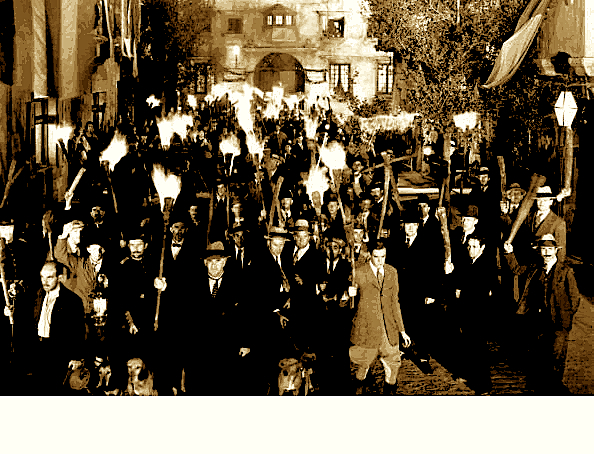



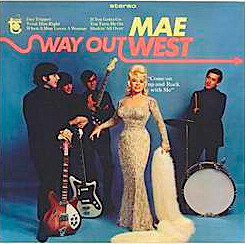
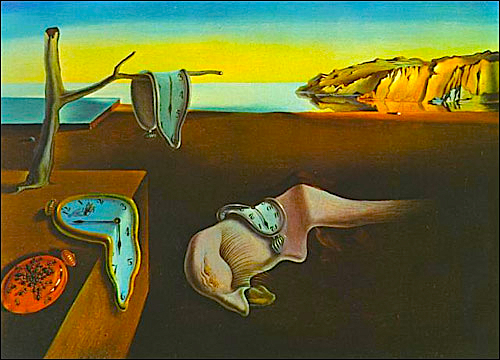
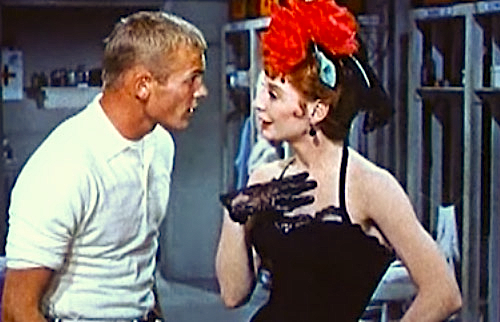
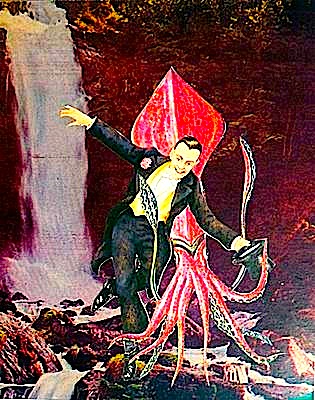



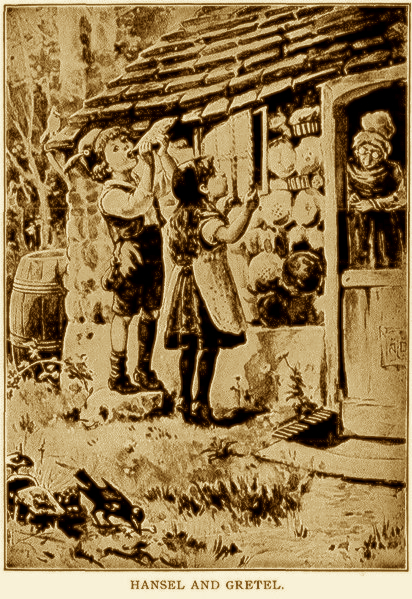

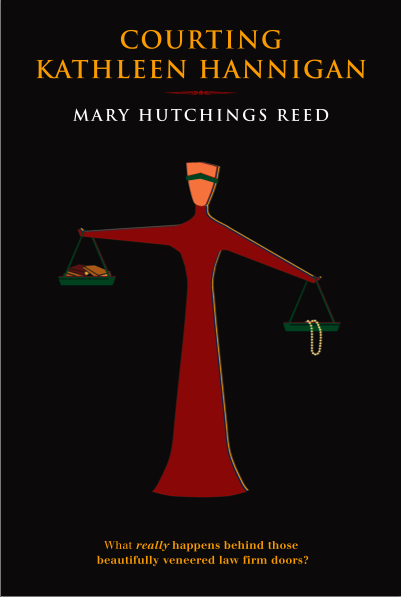


 Ever since turning 40 a few years ago,
Ever since turning 40 a few years ago, 
 PS: don’t forget to tune in on Friday for our end-of-the-week treat!
PS: don’t forget to tune in on Friday for our end-of-the-week treat!